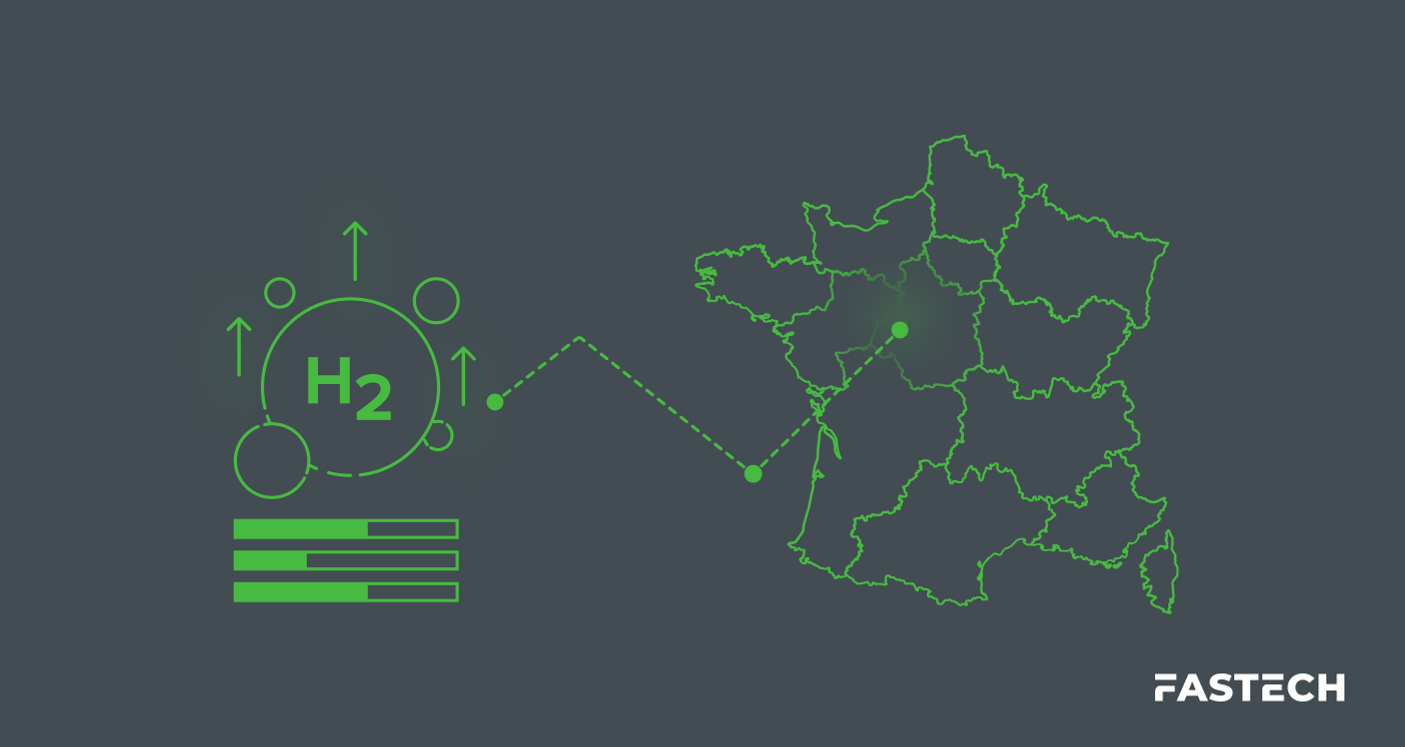Hydrogen's Promising Future in the Mobility Sector

Hydrogen mobility solutions are taking the world by storm. From the release of the Hyundai Nexo and the Toyota Mirai (two FCEV commuter cars) to the announcement of the Angeles Link, hydrogen gas is gainining in popularity and feasibility.
If you’re a newcomer to renewables, you may have questions. What is the future of hydrogen in the mobility sector? How does hydrogen fueling work? How is the nation currently powering vehicles with hydrogen, and what’s next?
Let’s explore the answers below.
Hydrogen As a Fuel: How Does It Work?
Before we look at hydrogen in the mobility sector, let’s break down some basic questions: How can hydrogen gas fuel vehicles, and how is it made in the first place?
Fuel Cell Electric Vehicles
Vehicles can use hydrogen for power with the help of a fuel cell. Mobility solutions using this tech are called fuel cell electric vehicles (FCEVs). Here's how they operate:
- The hydrogen passes through an electrolyte membrane from the fuel cell’s anode to its cathode.
- The hydrogen passes from the fuel cell’s anode to its cathode through an electrolyte membrane.
- As the hydrogen gas follows this path, it loses an electron through electrolysis.
- The free electrons (which provide an electrical charge) are collected and used to power the car’s battery which, in turn, powers the vehicle.
- The remaining H+ ions combine with oxygen from the air, forming H2O—water vapor—as the process’ only byproduct.
In an FCEV, hydrogen gas isn’t “burned” like traditional gas in the internal combustion engines the mobility sector has traditionally relied upon. Instead, hydrogen-powered vehicles operate like other electric cars and trucks. The difference is that hydrogen is used to keep the battery charged rather than plugging it into a power source during downtime.
Making Green Hydrogen
But where do we get the hydrogen gas to power FCEVs in the first place? Like the FCEV, the hydrogen production process relies upon electrolysis. This simple chemical reaction uses electricity to separate compounds and molecules.
When electrolysis is performed with energy from renewable resources like wind and solar, the gas produced by the process is termed “green hydrogen.”
With fuel and water vapor being the only byproducts of its use, green hydrogen allows the mobility sector to slash its greenhouse gas emissions drastically.
How Does Hydrogen Fuel Impact the Mobility Sector?
As a fuel source, hydrogen gas shows great promise for sustainable fueling in transportation and beyond—it burns clean and can be produced without using fossil fuels. But with electric vehicles already on the market, many may wonder if a competing technology makes sense to pursue.
Yet hydrogen fuel and other sustainability efforts aren’t actually competing; they have their own niches. This is because battery and electric vehicle technology aren’t currently capable of being adapted for use in heavy commercial vehicles and equipment. Applications that include the following still need a sustainable solution that batteries can’t currently deliver:
- Long-haul trucking
- Ocean freighters
- Construction vehicles and machinery
And hydrogen may not remain limited to this niche. The first mass-produced FCEV for consumers has been available for nearly a decade. Moreover, the advantages of hydrogen technology (such as rapid refueling) position it as becoming one of the dominant energy sources across all applications into the 21st century.
Uses for Hydrogen in the Mobility Sector
While all of the above might sound novel, the US is already using hydrogen-fueled vehicles for a variety of applications:
- Commuter cars – There are currently two commuter FCEVs on the market—the Hyundai Nexo (a small SUV) and the Toyota Mirai (a sedan).
- Buses – While buses have been a prime target for alternative energy for years, FCEV buses are popping up in municipal transit systems throughout the US. In tandem with buses fueled by compressed natural gas, FCEV buses are becoming some of the most common alternatively-fueled vehicles on the road.
- Heavy-duty trucks – While long-haul semi trucks aren’t commonly fueled with hydrogen yet, they’re increasingly currently common in port facilities and day-range applications.
- Medium-duty trucks – Delivery vehicles are excellent candidates for FCEV conversion, and many companies have begun introducing them into their fleets.
- Material handling vehicles – If you work in a factory or warehouse, you might be powering an FCEV without knowing it. Since they’re clean burning, FCEVs are an excellent choice for indoor industrial vehicles like forklifts.
- Trains – While FCEV trains have yet to be implemented in the US, Germany operates a successful FCEV rail program. Hydrogen fuel cell train installations are currently scheduled in South Korea and Japan.
- Marine transit – While large shipping vessels are still being tested for FCEV potential, numerous ferry systems worldwide are currently experimenting with FCEV-powered boats.
Challenges for Adopting Hydrogen in the Mobility Sector
The most significant challenge facing hydrogen gas and FCEVs is the availability of fueling stations.
However, innovators and renewables stakeholders are leading the charge to construct hydrogen fueling stations nationwide, bridging the gap between a fossil fuel-reliant past and a renewables-powered future. As more stations are built, it will be easier for industries in the mobility sector—like long-haul trucking—to readily switch to alternative fuels and reduce their emissions impact.
FASTECH: Leaders in Hydrogen Infrastructure
Hydrogen in the mobility sector is only growing. Companies are experimenting with FCEV fleet vehicles, vehicle manufacturers are producing hydrogen-powered commuter cars, and public transit systems show promise for continued sustainability improvements.
FASTECH is helping to usher the world into a green hydrogen future. We’ve built more hydrogen fueling stations than anyone else in the US—but we’re just getting started.
FASTECH has over 400 conventional fueling stations, 200+ compressed natural gas stations, and 35+ hydrogen stations under our belt. Contact us to bring your next renewable energy project to life.




